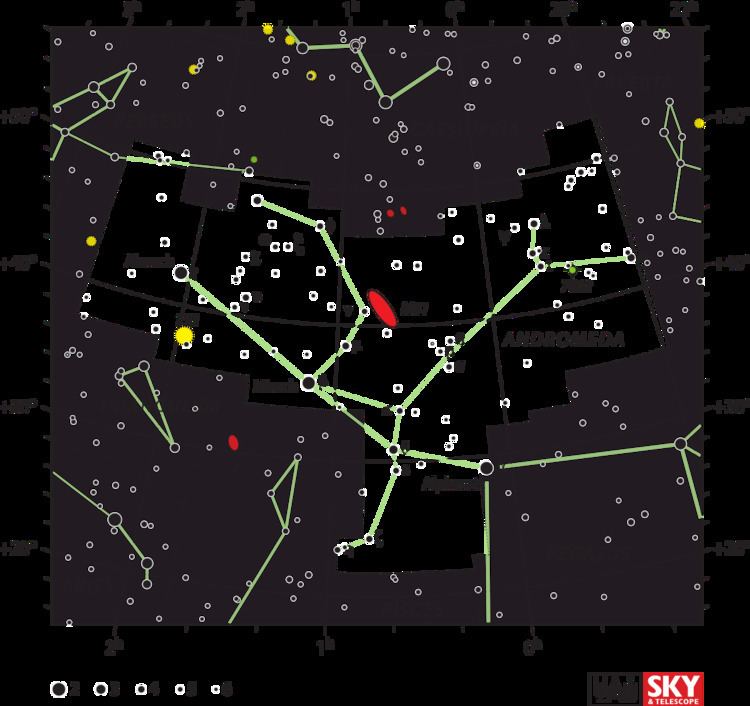Magnitude 4.51 Apparent magnitude (V) 4.51 | ||
 | ||
People also search for Rho Andromedae, Tau Andromedae | ||
Sigma Andromedae (σ And, σ Andromedae) is the Bayer designation for a star in the northern constellation of Andromeda. It has an apparent visual magnitude of +4.5, which is bright enough to be seen with the naked eye from most locations. Parallax measurements made during the Hipparcos mission place it at a distance of about 135 light-years (41 parsecs). The magnitude of the star is diminished by 0.08 from extinction caused by intervening gas and dust.
This star has a stellar classification of A2 V, which matches the spectrum of an A-type main sequence star. It is about 450 million years old and is spinning rapidly with a projected rotational velocity of 123 km/s. The interferometry-measured angular diameter of this star is 0.465 mas, which, at its estimated distance, equates to a physical radius of about 2.1 times the radius of the Sun. It is radiating 26 times the luminosity of the Sun from its outer atmosphere at a temperature of 8,929 K, giving it the white-hued glow of an A-type star.
In the past, radial velocity variations have been reported, but this remains unconfirmed. The star does not show any significant photometric variations and is used as a ubvy standard star. Sigma Andromedae is a candidate for membership in the stream of stars associated with the Ursa Major Moving Group. This is a set of stars that share a common motion through space, which suggests they originated together.
Naming
In Chinese, 天廄 (Tiān Jiù), meaning Celestial Stable, refers to an asterism consisting of σ Andromedae, θ Andromedae and ρ Andromedae. Consequently, σ Andromedae itself is known as 天廄三 (Tiān Jiù sān, English: the Third Star of Celestial Stable.)
